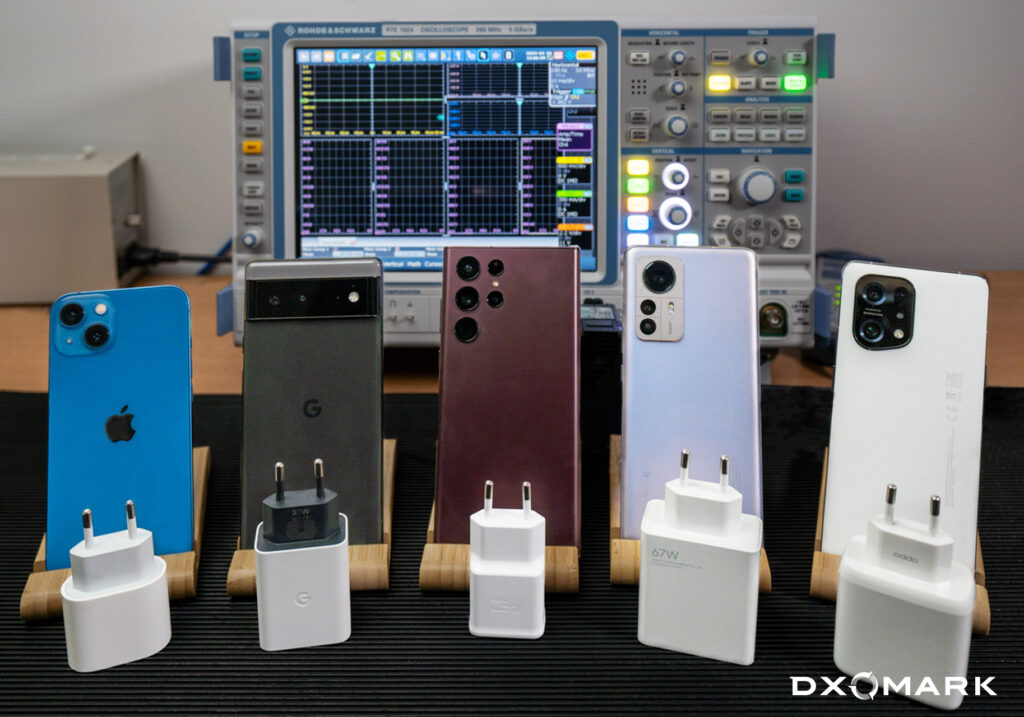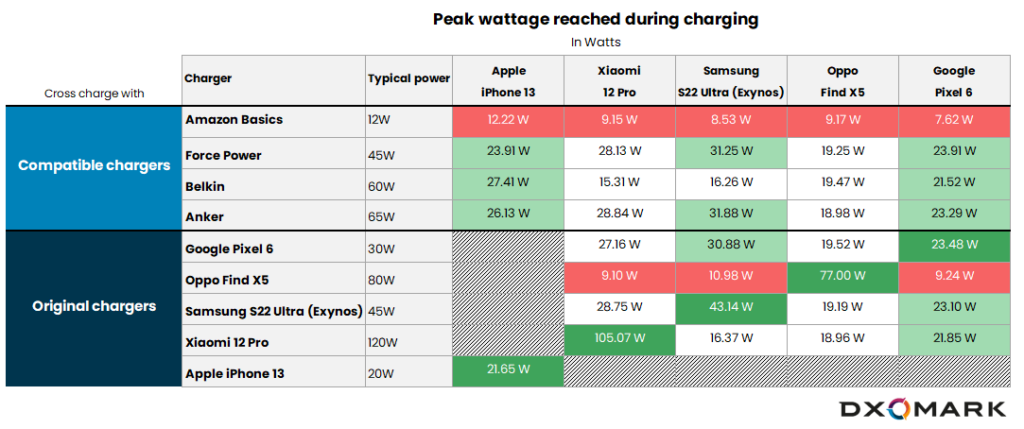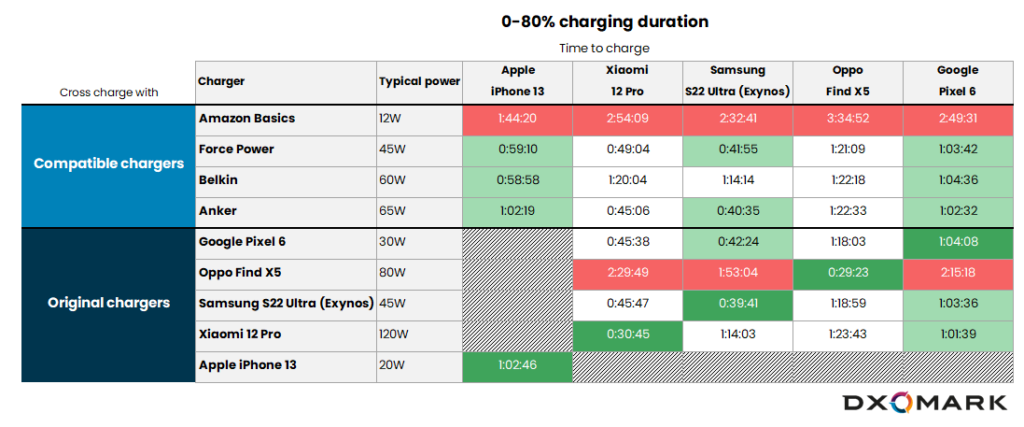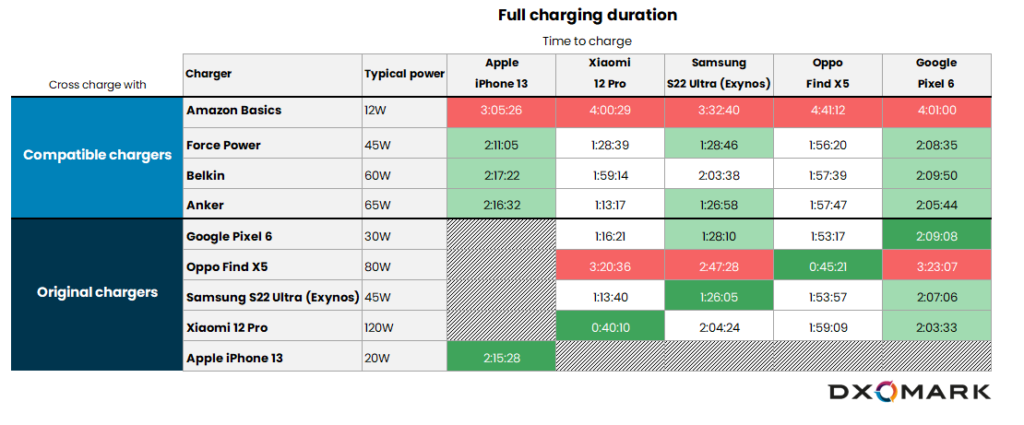Last year the European Council, Commission and Parliament agreed on new legislation whose principal aim is to reduce electronic waste and emissions in the EU. As a result, all new smartphones, tablets, cameras and other electronic gadgets marketed in the EU will have to come with a USB-C charging port by fall 2024. In addition, chargers will be unbundled from devices, giving consumers the choice whether to buy a new charger with a device or keep using the old one.
No more cable frustration
The new legislation is good news from a user experience perspective as well. A common charging interface means any device can be charged with any charger and you won’t find yourself in a situation of not being able to charge a device because you forgot to bring a compatible charger.
Manufacturers will also have to provide relevant information about charging performance, for example, power requirements and fast charging support. This will make it easy to work out if an existing charger will work with your new device and help select a new compatible charger if required. Limiting the need to buy new chargers and allowing for the reuse of existing chargers are expected to help save consumers approximately €250 million per year on unnecessary charger purchases.
Industry impact
In practice, large parts of the industry have been moving to USB-C as a quasi-standard for several years now, with only some low-cost devices still using the older micro USB connectors. After all, USB-C generally offers faster charging and data transfer than rival standards, and the cables are pretty much ubiquitous. Still, one major player will be more affected by the new rules than others. Apple uses its proprietary Lightning port on all its iPhone models and some iPad tablets. The company is already using USB-C on its laptops and some tablets, so should be able to port the technology to its iPhone line smoothly, but Apple could also eliminate the problem by getting rid of cable charging altogether and solely rely on wireless charging.
Charging a device is more complex than you would think
Charging electronic devices–and smartphones, in particular–is not just about the connector. Compatibility with a charger also depends on the device. For example, a 65W charger will not be able to deliver that kind of power to a device that is built to accept a maximum of 25W. In fact, the device might not even charge at its 25W maximum power. For that to happen, the charging protocols used in the device and in the charger must be compatible.
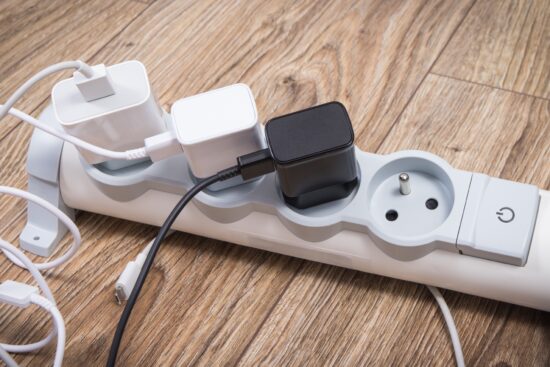
In short: a USB-C charger from manufacturer A will charge a device from manufacturer B and vice versa but the charging will potentially be far from optimal. When charging your phone with a charger from another manufacturer the process is likely to take longer and be less efficient when compared to the charger that comes in the box. This is because there is a huge variety of charging protocols and almost every manufacturer uses a different one. Some manufacturers even use more than one protocol, or different update versions of the same protocol, within their own device line up. In addition, there is a large selection of third-party chargers available. The makers of those are only in position to support public standards and cannot offer proprietary standards that are kept secret by device manufacturers. When a new public standard is released it will also take some time before it is supported by all models in a charger manufacturer’s line-up. While the latest model likely supports the latest standards, a charger that has been around for some time might not.
While there is a basic standard for power delivery in the shape of USB-C Power Delivery (USB-C PD), not all manufacturers are using it, with many others relying on proprietary protocols. For example, Samsung and Google only use USB-C PD. Xiaomi and Oppo on the other hand are developing proprietary superchargers which give them a significant competitive advantage in terms of charging speed for their products. However, they are lagging when it comes to compatibility with other products on the market.
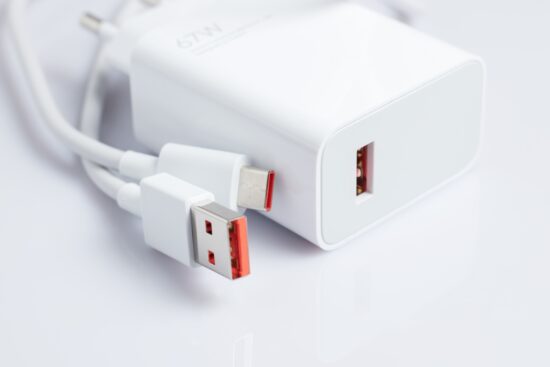
USB-PD protocol explained
Those manufacturers who do not use a proprietary charging protocol usually rely on USB Power Delivery (USB-PD). The USB specifications cover all aspects of USB, from hardware connectors to data transfer protocols, as well as power supply. USB Power Delivery specifications were first published in 2012 and allowed for fast charging of devices via a USB connection — up to 100W for some device categories.
Since then, the standard has been updated multiple times and the current version 3.1 offers extended charging power up to 240W, covering even the most demanding laptops. It’s not always easy to find these numbers, though. While data transfer protocol information of the different USB versions is easy to come by, you have to dive deep into the detailed specs to find the power supply version.
In addition to USB-PD, there is also USB-PD PPS (Programmable Power Supply) which is a very advanced charging technology for USB-C devices. It allows for continuous adjustment and optimization of the charging voltage, resulting in more efficient charging.
USB PD is an open and widely adopted standard, which means it is comprehensively documented, enabling easy adoption for manufacturers. In contrast, proprietary protocols are not documented publicly at all which also means that consumers simply must trust the manufacturers’ technical claims are true.
Below you can see a (non-comprehensive) list of charging protocols currently in use. As if the sheer number of protocols wasn’t confusing enough, some manufacturing groups use different names for the same protocol across their brands. For example Super VOOC on Oppo devices, Ultra Dart on Realme, Warp Charge on OnePlus and FlashCharge on Vivo and IQOO are just different names for one and the same protocol. On the plus side, the top four Chinese manufacturers Huawei, Oppo, Vivo, and Xiaomi, are currently working together to create a unified charging standard.
Here is a list of some of the fast-charging brand names one can encounter on the market:
- Quick Charge (Qualcomm)
- QC2.0
- QC3.0
- QC4/4+
- QC5
- Power IQ3 (Anker)
- Super VOOC (Oppo, Realme, OnePlus)
- FlashCharge (Vivo, IQOO)
- Adaptative Fast Charging (Samsung)
- Pump Express (MediaTek)
- SuperCharge (Huawei)
- Hypercharge (Xiaomi)
- TurboPower (Motorola)
- Apple
DXOMARK cross-charging tests
So, despite a unified charger shape, the charging experience might be far from unified. But just how bad is the current situation? The DXOMARK Battery team has undertaken extensive cross-charging tests to find out. Test devices included the Apple iPhone 13, Xiaomi 12 Pro, Samsung Galaxy S22 Ultra, Oppo Find X5 and the Google Pixel 6. All phones were charged with their bundled or recommended chargers and all chargers from the rival phones in addition to several popular third-party chargers from the likes of Amazon Basics, Force Power, Belkin, and Anker.
Tests were conducted using an oscilloscope with very accurate probes connected to an in-house developed PCB (printed circuit board) card, and a thermometer. The following measurements were taken for all charger/device combinations:
- Charging time
- Charging power
- Charge efficiency
- Charger efficiency
- Residual consumption of the charger
- Temperature throughout a charge
Third-party chargers only support standard charging protocols
Third-party chargers do not have access to the device makers’ proprietary charging protocols. When charging a smartphone that supports very high charging wattages with a proprietary charger, in most cases they fall back on standard charging protocols, such as USB PD 2.0 or even 1.0. So when buying a third-party charger it’s definitely important to check what standards and devices it is actually 100% compatible with, otherwise, you might end up with slower charging than expected.
While USB PD 2.0 is well optimized for the iPhone 13 for example, on most of the other devices its use results in noticeably lower wattages and longer charging times when compared to the bundled chargers and their proprietary protocols. The performance of the cheapest charger of the bunch, the model from Amazon Basics, was especially underwhelming with all phones.
Super-chargers are only super with the device they were designed for
Our testing also showed that proprietary super-fast chargers, for example, the models from Oppo and Xiaomi, have compatibility issues and don’t play well with devices they were not specifically designed for. The Oppo chargers, in particular, were the least compatible. The super-chargers cannot even be swapped with each other without a drop in charging performance. So don’t expect a super-charger from brand A to charge your phone from brand B any faster, even if the latter comes with its own super-charger that has the same or even higher wattage. This is illustrated in the following graphs:
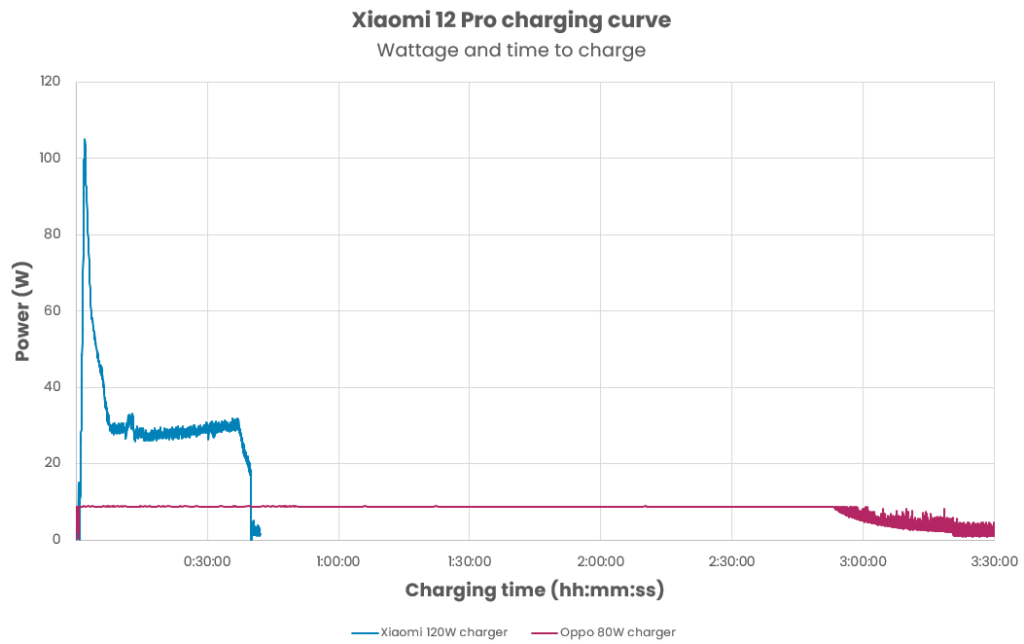
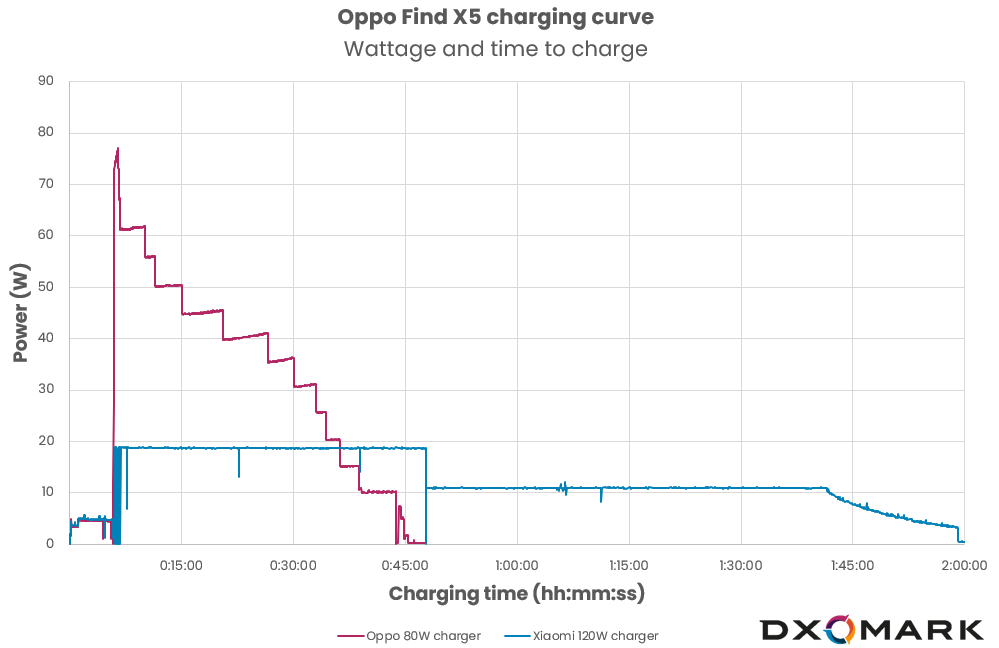
These are only some of the findings of our charger testing. We will publish more detailed test results in another article soon.
A long way to go for a truly unified charging experience
This first round of DXOMARK cross-charge testing shows that you can indeed use any USB-C charger to charge a device with a suitable charging port. However, with devices that support charging at more than 30W the charging performance is in most cases far from optimized. At below 30W the experience with a charger from a different brand is close to the in-box charger.
At more than 30W using a charger other than the one that came in the box results in prolonged charging times and an overall sub-optimal charging experience. Manufacturers will have to get together and put a lot more work into harmonizing charging protocols for a truly unified charging experience across all brands. Unless this is achieved, consumers might prefer to stick with proprietary chargers, reducing the positive environmental impacts and cost savings for consumers of the newly introduced legislation. This said, the new legislation also encourages the adoption of the USB-PD charging standard. Any smartphone or charger supporting more than 30W with a proprietary standard will also have to support similar charging speeds with USB-PD.
What does this mean for makers of third-party smartphone chargers?
Michel Bassot, chairman of Bigben Connected[1], a maker of smartphone chargers and accessories, said, “Technology standardization rarely comes with a unique and detailed specification, » which could lead to different interpretations between the smartphone manufacturers and accessory makers.
« If, technically, it makes sense, in reality, it creates confusion in end-user comprehension of the technology advantages, » Bassot said.
Although the fragmentation of USB-C charging would probably weaken OEM’s offerings, he said that the EU legislation would also be an opportunity for specialized accessory makers to reassure consumers of an independent and neutral position toward smartphone brands.
Conclusion
Our test results showed that charger behavior depended on both device and charger supporting the same charging protocols. If the charger and smartphone do not support the same protocol, a default protocol kicks in, which currently provides basic 10W charging at best. If there is at least one common protocol, charging power could potentially go up to 30W.
The new EU legislation will require that super-chargers become more compatible by at least supporting the USB-C PD standard to the maximum power in an effort to include as many devices as possible. It will also facilitate the compatibility of third-party chargers, as all manufacturers will be required to support the standards.
This would also put pressure on manufacturers like Oppo and Xiaomi, whose superchargers work best with their own products, to provide more compatibility.
The EU’s common charger ruling is not just about adopting a common type of plug. It’s not just about making Apple switch from its proprietary lightning port to the more universal USB-C. The new legislation will require an effort from all manufacturers to achieve an acceptable level of compatibility.
[1]Bigben is a European-based company that supplies and manufactures electronic items for video game consoles and smartphone accessories. It has now diversified into multimedia and video games. Its distribution network spans five continents. https://www.bigben-connected.com


